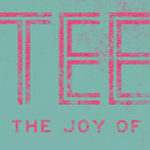BELTON—The University of Mary Hardin-Baylor, in partnership with the Bell County Museum, brought a traveling exhibit about the Holocaust to Central Texas.
 This poster promoted the International Hygiene Exhibition in 1911. The eugenics movement pre-dated Nazi Germany. A 1911 exhibition at the German Hygiene Museum in Dresden included a display on human heredity and ideas to improve it. (Deutsches Historisches Museum, Berlin)“Deadly Medicine: Creating the Master Race,” a traveling exhibition from the U.S. Holocaust Memorial Museum, will be on display in the West Gallery of the Bell County Museum at 201 North Main Street in Belton through May 21.
This poster promoted the International Hygiene Exhibition in 1911. The eugenics movement pre-dated Nazi Germany. A 1911 exhibition at the German Hygiene Museum in Dresden included a display on human heredity and ideas to improve it. (Deutsches Historisches Museum, Berlin)“Deadly Medicine: Creating the Master Race,” a traveling exhibition from the U.S. Holocaust Memorial Museum, will be on display in the West Gallery of the Bell County Museum at 201 North Main Street in Belton through May 21.
Timothy Crawford, dean of the College of Christian Studies at UMHB, worked with the Bell County Museum to bring the exhibit to Belton.
“I knew that they do these traveling exhibits,” Crawford said. “And I looked at the schedule and started making inquiries.”
When he noticed no exhibits scheduled anywhere in Texas, Crawford asked about bringing one to Belton.
“The one hitch was that it required 2,000 square feet dedicated to permanent display,” Crawford said. “And we just didn’t have a space like that on campus.”
Crawford approached officials at the Bell County Museum about serving as host site for the exhibit.
“They were really excited,” Crawford said. “It’s a great opportunity for our whole community to get to experience it.”
Crawford, who is teaching a course called “Anti-Semitism, Christianity and the Holocaust” this semester, believes there is much to learn from the study of the Holocaust.
Sign up for our weekly edition and get all our headlines in your inbox on Thursdays
“One of the things that people ask is: Why did the Holocaust happen? Why the Jews?” Crawford said. “The reality is that it didn’t begin with the Nazis. In fact, there were centuries of anti-Jewish teachings leading up to that point, much of it propagated by the church.”
The focus of the “Deadly Medicine” exhibit is especially powerful, organizers noted.
“‘Deadly Medicine’ explores the Holocaust’s roots in then-contemporary scientific and pseudo-scientific thought,” exhibition curator Susan Bachrach said. “At the same time, it touches on complex ethical issues we face today, such as how societies acquire and use scientific knowledge and how they balance the rights of the individual with the needs of the larger community.”
“The very folks who should have been the first to put the brakes on this kind of nonsense, not just doctors but theologians of the time, instead got into gear to make it happen,” Crawford said.
The exhibition—jointly sponsored by the College of Christian Studies at UMHB and the Bell County Museum—is made possible through the support of the David Berg Foundation, the Blanche and Irving Laurie Foundation, the Lester Robbins and Sheila Johnson Robbins Traveling and Temporary Exhibitions Fund and the Dorot Foundation.














We seek to connect God’s story and God’s people around the world. To learn more about God’s story, click here.
Send comments and feedback to Eric Black, our editor. For comments to be published, please specify “letter to the editor.” Maximum length for publication is 300 words.